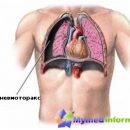Prostate Ultrasound - Decryption and Interpretation of Research Results.
Content
Ultrasound prostatic gland

Ultrasound — The main instrumental method of diagnosing prostate diseases. In the course of the study, the body is irradiated with high-frequency sound waves, the reflection of which, depending on the tissue density, generates an image.
Transabdominal ultrasound of the prostate gland is carried out on a complete bladder. Transrectal ultrasound (CUTU) is carried out through the rectum. Plusi pluses — Above quality image, informativeness and accuracy.
The main data obtained during the study:
- Dimensions: an increase can be an echo-disconnect of adenoma, prostatitis or neoplasms (NORD D: W: T — 2.5-4.5: 2.3-4: 1.5: 2.5 cm.);
- Volume: no more than 30 cm3; increase — echo-discharge, adenoma or neoplasm;
- Ehogenesis — the intensity of the reflection of sound waves; It increases with increasing body density — Chronic prostatitis, deposition of calcium salts, microcalcinates in gland tissues decreases — in acute inflammation;
- Uniformity structure — determined by the density of prostate tissues; in the presence of foci (inflammation, cysts, abscesses, knots, neoplasms, calcinates) with different characteristics The structure of heterogeneous, which is a sign of pathology;
- Symmetry and clarity of contours — indicator of the absence of bulk and oncological processes that change the form of prostate;
- Dopplerography of prostate gland — Mode of operation of the ultrasound scanner, determining the degree of blood flow and vascularization in the body; When prostate cancer, a large number of newly educated vessels are found;
- consistency — Elastography (operation of the ultrasound scanner) allows you to evaluate the tissue density of the gland; Enhancement is observed in chronic inflammation, the growing of connective tissue, malignant neoplasms.
Research results are transmitted to urologist.









